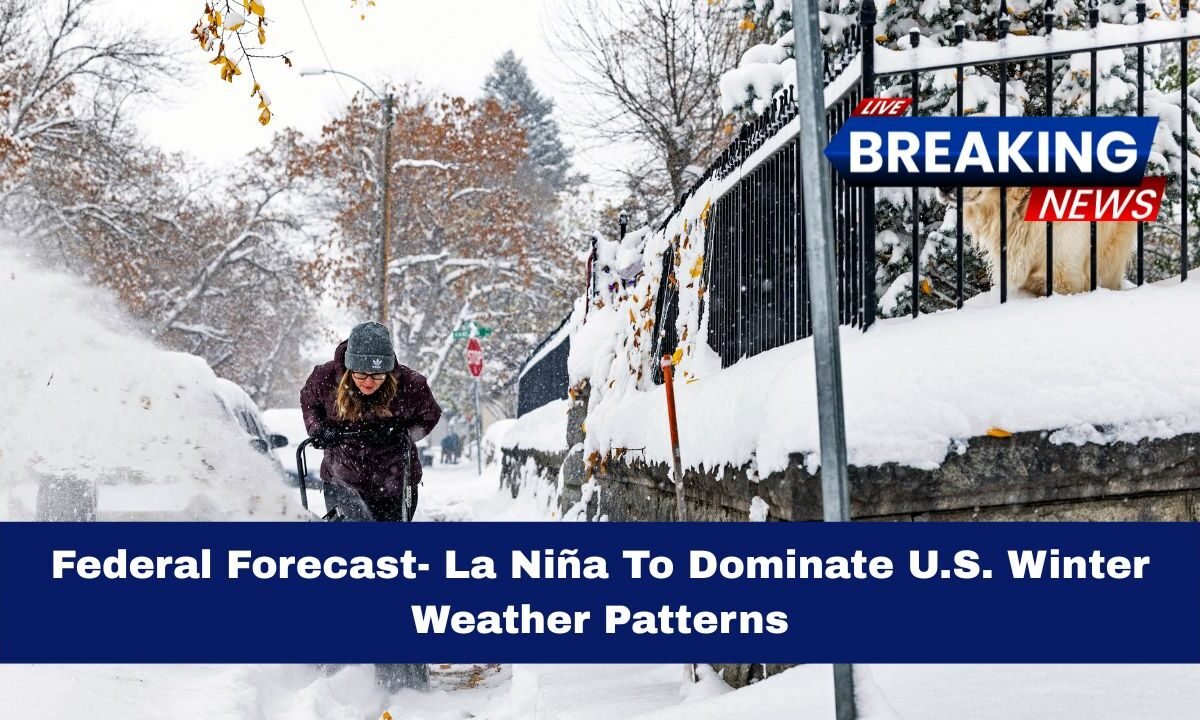The latest federal winter outlook confirms that La Niña will strongly influence America’s winter weather patterns, affecting temperatures, precipitation and storm tracks across the country.
Forecasters say the cooling of Pacific Ocean waters has already begun shifting atmospheric winds, setting up a winter that could look very different across regions of the United States.
What La Niña Means for the United States
La Niña forms when Pacific Ocean temperatures drop below normal, steering the jet stream farther north. This shift changes where storms travel, how cold air moves and how often certain areas experience snow, rain or dry spells.
Federal climatologists expect this winter to follow the typical La Niña pattern:
- Warmer and drier conditions in the Southern U.S.
- Colder and wetter conditions in parts of the Northern U.S.
- Increased snowfall for the Pacific Northwest and northern Rockies
- Reduced storm activity in the South, including fewer major winter systems
Although each La Niña winter is different, experts say this year’s pattern is already showing clear signs that it will shape the season ahead.
Regional Breakdown of La Niña Impacts
Southern United States
States such as Texas, New Mexico, Louisiana and Florida may see warmer-than-normal temperatures with below-average rainfall. This raises concerns about wildfire risks, dry soil, and drought expansion.
Central and Great Lakes Region
The central U.S. and Great Lakes could face more frequent storms, above-normal precipitation, and higher-than-average snowfall depending on how far south the jet stream dips.
Pacific Northwest and Northern Rockies
These areas often experience strong La Niña effects, including colder temperatures, increased mountain snow, and early-season winter weather.
Northeast and Mid-Atlantic
With storm tracks shifting north, the Northeast may experience more frequent winter systems, though the strength of these storms depends on how cold air interacts with the northern jet stream.
How Americans Should Prepare
Winter planning becomes more important during a La Niña year. Here’s what people should consider:
- Energy bills may rise in colder northern states due to increased heating needs.
- Agriculture in southern states may experience dry conditions affecting winter crops.
- Snow removal and transportation services in northern regions should prepare for increased storm activity.
- Ski resorts in the Northwest and northern Rockies may benefit from stronger snowfall.
Whether winter brings mild or harsh conditions will depend heavily on how deeply the jet stream dips during peak months.
This year’s La Niña-driven winter will bring a mix of warmth, dryness and reduced storm activity across the South while delivering a colder, stormier season to the North.
From snow-packed mountains in the Northwest to mild days across the Gulf Coast, La Niña will leave a clear mark on America’s winter patterns.
Understanding these shifts helps families, travelers and businesses prepare for the months ahead—because once La Niña takes control of the jet stream, the entire country feels the impact.




